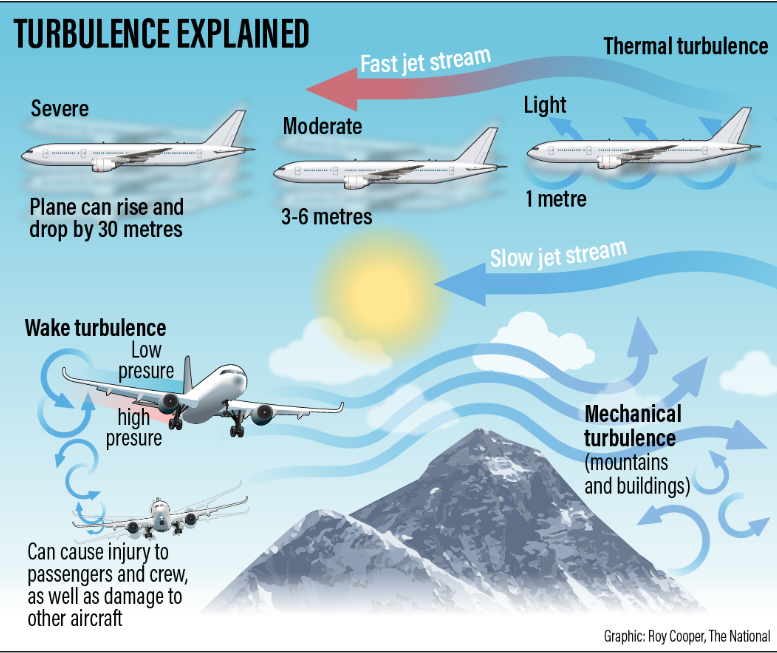News Excerpt: The London to Singapore flight encountered sudden extreme turbulence over the Irrawaddy Basin [a river in Myanmar] at 37,000 feet, about 10 hours after departure.

What is turbulence?
- Turbulence occurs when a plane flies through clashing bodies of air moving at widely different speeds.
- With light and moderate turbulence, passengers might feel a strain against their seatbelts, and unsecured items could move around the cabin.
- But in severe cases turbulence can throw passengers around the cabin, causing severe injuries and occasionally death.
Reasons for the turbulence:
- Due to thunderstorms:
- Tropical thunderstorms can form moisture quickly in the early afternoon as the land heats up, especially near the coastline.
- Such thunderstorms may not appear on radar in their earliest stages, even though the quick rising motion within them can still produce turbulence. The storm cells likely grew from 20,000-30,000 feet to well over 50,000 feet in less than an hour.
- Due to cloud:
- Most turbulence occurs in clouds where there are up and downdrafts of wind.
- Much of that will be fairly mild but in bigger clouds - such as the Cumulonimbus thunderstorm cloud - the chaotic movements of air can cause moderate or even severe turbulence.
- Clear Air Turbulence(CAT):
- This is cloudless and can't be seen, and happens around the jet stream, a fast flowing "river" of air that's typically found at 40,000-60,000 ft.
- You can easily have a 100 mph speed difference between the air in the jet stream and the surrounding air, this friction around the jet stream between the slower and faster air causes turbulence.
Threats involved:
- It can cause structural damage to a plane because of how strong the winds can be.
- It can be dangerous to air passengers because of the violent motion it can cause, which can throw anyone who is not wearing a seatbelt across the cabin.
How to handle a turbulence:
- By Pilots:
- Pilots get specific aviation forecasts before they fly to study this information while planning their routes, so as to avoid isolated thunderstorms.
- Other aircraft already traveled on the same routes will also report any turbulence, which helps the Pilots to avoid these areas, or slow the plane down to lessen its impact.
- Crews are also trained in how to respond to turbulence.
- By Passengers:
- They are advised to stay strapped all the time to avoid unpredicted turbulence.
Why is turbulence becoming frequent?
As per the research done on clear air turbulence by the Reading University in the UK, the turbulence has increased by 55% between 1979 and 2020. The reasons behind this could be:
- Changes in wind speed at high altitudes due to warmer air from carbon emissions.
- Due to climate change.
Way forward:
- Investing more in improved turbulence forecasting and detection systems,
- Satellites can be used to see the structure and the shape of the jet stream, allowing it to be analyzed in order to understand any upcoming turbulence.
- Proper training of the pilot and crews after every interval to efficiently manage and deal with turbulence.


